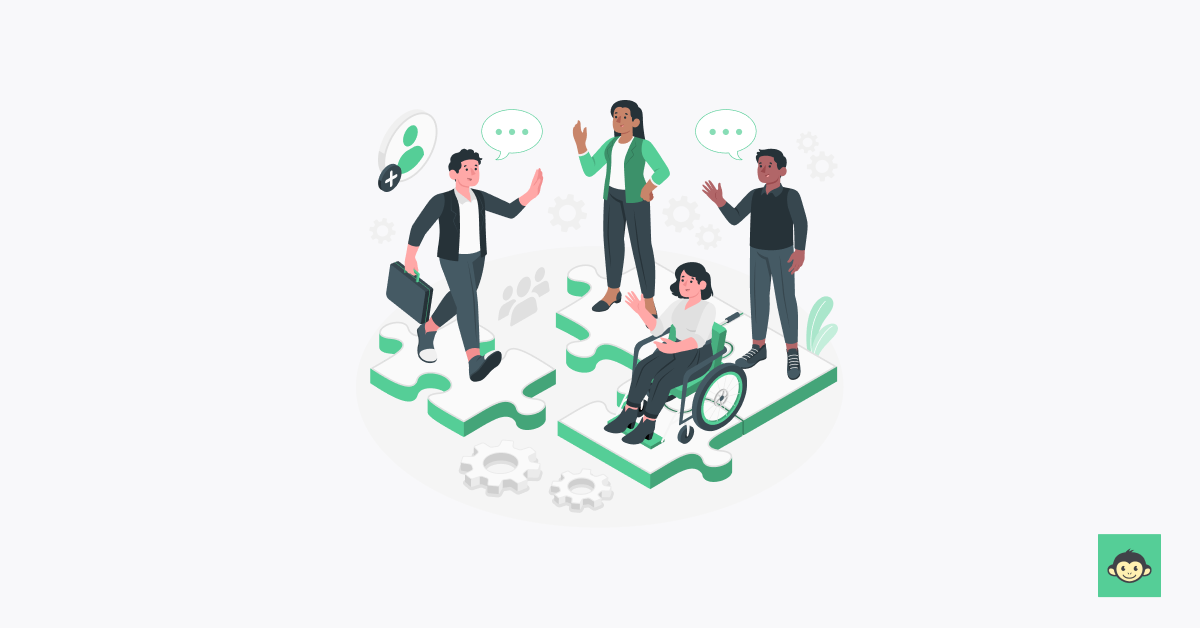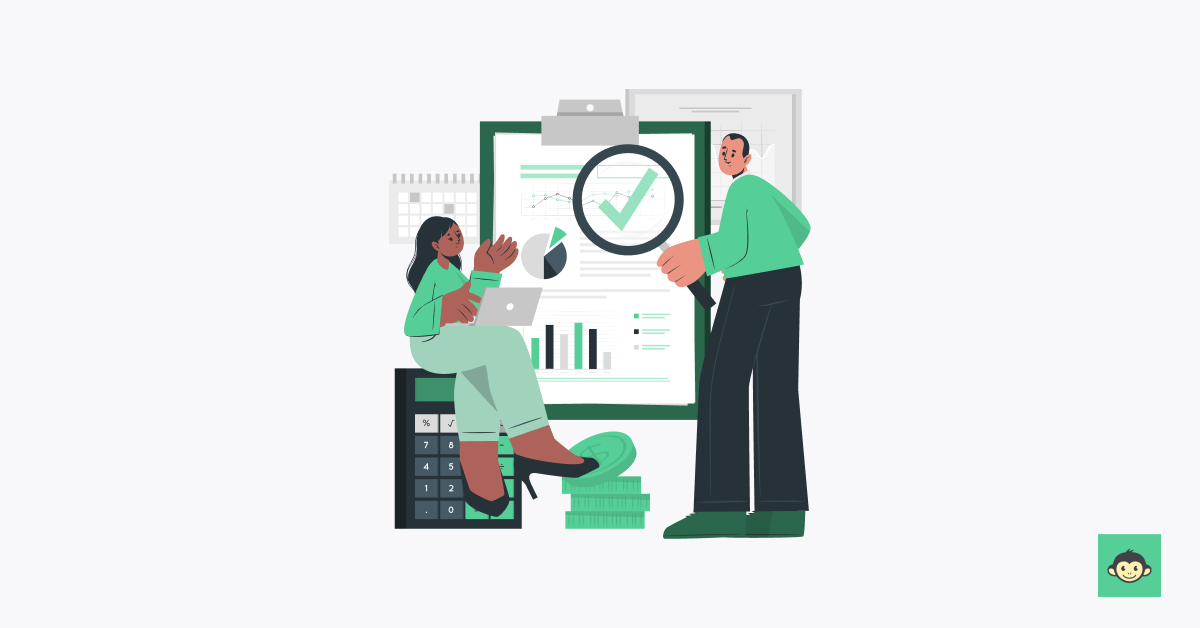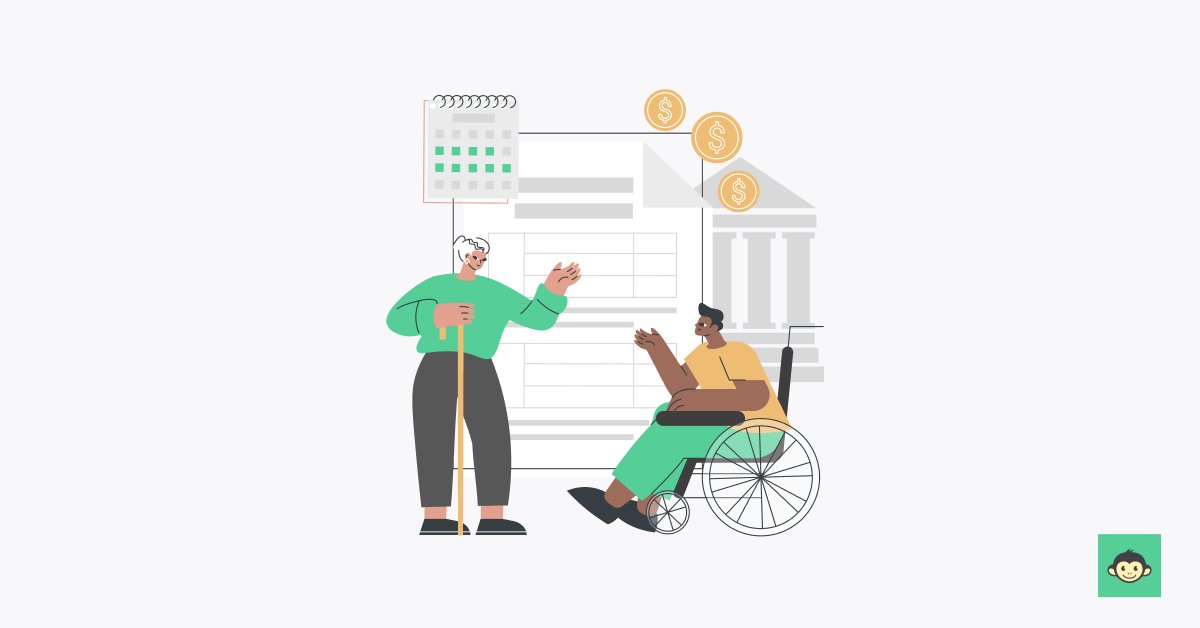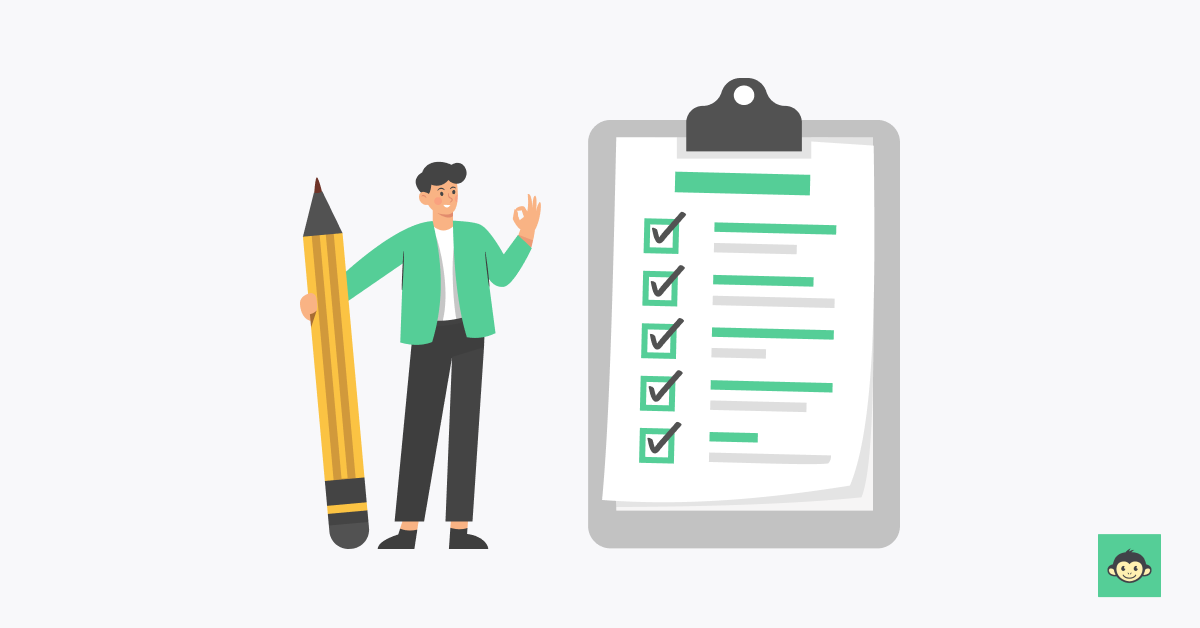What is a DEI audit: Benefits, checklist, and top questions to ask in 2024

Imagine unlocking a treasure map that leads to a thriving, inclusive workplace. A roadmap brimming with diverse talent, where equity reigns and belonging blooms. Sounds pretty epic, right? Well, that's exactly what a DEI audit can offer your organization. But before you grab your pickaxe and set sail, let's untangle the mysteries of this powerful tool.
Think of a DEI audit as a magnifying glass for your company culture. It zooms in on critical areas like hiring practices, employee resource groups, and promotion pathways, revealing hidden pockets of bias and highlighting opportunities for growth.
It's not about finger-pointing; it's about illuminating the path to an equitable and inclusive work environment where everyone feels valued, heard, and empowered to thrive.
Why 2024? Because the world is changing. Diverse talent pools are no longer a bonus, they're a business imperative. Customers crave authenticity, investors demand ethical practices, and top talent seeks workplaces that mirror the vibrant tapestry of our world. In 2024, DEI isn't just a checkbox, it's a competitive edge.
So, how do you navigate this exciting, yet complex landscape? This blog is your compass. We'll delve into the nitty-gritty of DEI audits, exploring the benefits, the key questions to ask, and even a handy checklist to get you started.
What is the DEI audit process?

The DEI (Diversity, Equity, and Inclusion) audit process is a systematic examination of an organization's policies, practices, and culture to assess how well it promotes diversity, ensures equity, and fosters an inclusive environment.
This comprehensive evaluation involves collecting and analyzing both quantitative and qualitative data to identify strengths, weaknesses, and areas for improvement in the organization's DEI efforts.
To skim over the process, organizations go about it as follows – Clear objectives are defined, and a diverse audit team is assembled, ensuring a blend of DEI expertise, data analysis skills, and effective communication.
Organizational policies are thoroughly reviewed, followed by the meticulous gathering of quantitative data on demographics, compensation, and key metrics, complemented by qualitative insights from surveys and interviews. The assessment extends to workplace culture, employee resource groups, and inclusion initiatives.
Gaps are identified and prioritized based on impact and feasibility, and the organization's performance is benchmarked against industry metrics. The process culminates in the development of a data-driven action plan with measurable goals and a timeline for implementation.
Continuous monitoring of progress and a flexible approach to strategy adjustments based on feedback and organizational changes ensure the sustained effectiveness of the DEI initiatives.
What is DEI compliance?

DEI compliance refers to an organization's adherence to legal and regulatory standards related to Diversity, Equity, and Inclusion.
It involves ensuring that policies, practices, and workplace culture align with laws and guidelines that promote fairness, equal opportunities, and inclusivity for all individuals, regardless of their background or identity.
Compliance in the DEI context encompasses various aspects, including
- Anti-discrimination laws: Ensuring conformity with laws that prohibit discrimination based on characteristics such as race, gender, age, disability, sexual orientation, and other protected attributes. Compliance with these laws helps create a workplace free from bias and discrimination.
- Equal Employment Opportunity (EEO) Laws: Adhering to EEO laws that mandate fair treatment in all aspects of employment, from hiring and promotions to compensation and termination. This promotes equity and equal opportunities for employees.
- Affirmative action: For organizations that fall under affirmative action obligations, DEI compliance involves implementing proactive measures to address historical and systemic imbalances, particularly in hiring and promotion practices.
- Accessibility standards: Ensuring accessibility for individuals with disabilities, both in physical spaces and digital environments. Compliance with accessibility standards promotes an inclusive workplace for employees with diverse abilities.
- Harassment prevention: Establishing and enforcing policies to prevent and address harassment based on protected characteristics. DEI compliance involves creating a work environment where employees feel safe and respected.
- Data collection and reporting: Complying with requirements to collect and report diversity-related data. This may involve providing demographic information on the workforce to demonstrate efforts toward creating a diverse and inclusive workplace.
- Training and education: Implementing training programs to educate employees and leadership on diversity, equity, and inclusion. DEI compliance involves fostering awareness and understanding of the importance of creating an inclusive work environment.
- Pay equity: Ensuring that compensation practices align with principles of fairness and equity, addressing any disparities that may exist among different demographic groups.
DEI compliance goes beyond meeting minimum legal requirements; it reflects a commitment to creating a workplace where individuals of all backgrounds feel valued, respected, and have equal opportunities for growth and success.
Organizations that prioritize DEI compliance contribute not only to legal adherence but also to building a positive reputation, attracting diverse talent, and fostering a culture of inclusivity.
What are the benefits of a DEI audit?

Conducting a DEI audit offers a range of advantages for organizations committed to fostering diversity, equity, and inclusion.
These benefits extend beyond legal compliance, providing valuable insights and actionable strategies to create a more inclusive and equitable workplace. Here are the key benefits of a DEI audit:
- Identifying blind spots: A DEI audit helps uncover hidden biases, disparities, and areas of inequality that may go unnoticed in day-to-day operations. By examining various aspects of the organization, including policies, practices, and workplace culture, the audit reveals areas for improvement.
- Enhancing reputation: Demonstrating a commitment to diversity and inclusion through a DEI audit positively impacts an organization's reputation. This commitment resonates with employees, customers, and investors, showcasing the organization as socially responsible and forward-thinking.
- Legal compliance: A DEI audit ensures compliance with diversity-related legislation and regulations. By systematically reviewing policies and practices, organizations can identify and address any potential legal and reputational risks related to discrimination or inequitable treatment.
- Employee satisfaction and retention: Creating an inclusive workplace environment, as informed by the DEI audit findings, contributes to higher levels of employee satisfaction and retention. Employees who feel valued and included are more likely to stay with the organization, reducing turnover costs.
- Informed decision-making: The audit provides valuable insights that inform strategic decision-making. Organizations can align their DEI efforts with broader organizational goals, ensuring that initiatives are data-driven and targeted for maximum impact.
- Competitive advantage: In the evolving landscape of business, diversity is not just a checkbox; it's a competitive edge. Organizations that leverage the insights gained from a DEI audit to create a more diverse and inclusive workplace position themselves as attractive to top talent, clients, and investors who value authenticity and ethical practices.
- Mitigating bias and discrimination: Through the examination of hiring practices, promotion pathways, and workplace culture, a DEI audit helps identify and address instances of bias and discrimination. This proactive approach contributes to a fair and equitable work environment.
- Cultural transformation: The audit serves as a catalyst for cultural transformation within the organization. By addressing gaps and implementing targeted initiatives, organizations can shift towards a culture that values diversity, equity, and inclusion at its core.
- Strategic alignment: DEI audits allow organizations to align their diversity and inclusion efforts with overall business strategy. This ensures that DEI initiatives are not isolated but integrated into the broader goals and vision of the organization.
- Employee engagement: A DEI audit, coupled with transparent communication of findings and action plans, fosters increased employee engagement. Employees are more likely to feel a sense of pride and connection to an organization that actively seeks to create a fair and inclusive workplace.
The bottom line is that a DEI audit goes beyond compliance, offering organizations a roadmap to build a more inclusive, equitable, and culturally rich workplace while reaping the associated benefits of enhanced reputation, employee satisfaction, and a competitive edge in the market.
What is the role of internal audit in DEI?

The role of internal audit in Diversity, Equity, and Inclusion is crucial for organizations aiming to systematically evaluate and enhance their diversity initiatives.
Internal audit teams play a strong role in ensuring that DEI practices align with organizational goals, legal requirements, and industry best practices. Here's an overview of the key aspects of the internal audit's role in DEI:
Assessment of policies and procedures:
- Internal auditors evaluate existing policies and procedures related to hiring, promotions, and employee development to ensure they align with DEI goals.
- They assess the clarity, effectiveness, and inclusivity of these policies, identifying areas for improvement.
Compliance review:
- Internal audit teams ensure that the organization complies with diversity-related laws and regulations.
- They review and assess the organization's adherence to equal employment opportunity (EEO) laws, anti-discrimination statutes, and any applicable affirmative action requirements.
Data collection and analysis:
- Internal auditors collect and analyze quantitative data, such as demographic information on the workforce, compensation data, and key diversity metrics.
- They assess the accuracy and completeness of the data, identifying any disparities or trends that may require attention.
Cultural assessment:
- Internal audit teams evaluate the prevailing workplace culture to identify any elements that contribute to or hinder diversity and inclusion.
- They assess the effectiveness of communication channels and the organization's commitment to fostering an inclusive environment.
Review of employee resource groups (ERGs) and initiatives:
- Auditors assess the effectiveness of ERGs and other diversity initiatives in promoting a sense of belonging and community among employees.
- They evaluate the alignment of these initiatives with organizational goals and identify opportunities for improvement.
Training and development programs:
- Internal auditors review training and development programs related to diversity, equity, and inclusion.
- They assess the effectiveness of these programs in educating employees and leadership on DEI principles and promoting a culture of awareness.
Risk management:
- Auditors identify and assess potential risks associated with the organization's DEI efforts.
- They evaluate legal and reputational risks, providing recommendations to mitigate these risks and ensure the organization's DEI practices are sustainable.
Benchmarking and best practices:
- Internal audit teams compare the organization's DEI practices with industry benchmarks and best practices.
- They identify areas where the organization excels and areas where improvement is needed to stay competitive in attracting and retaining diverse talent.
Actionable recommendations:
- Based on the audit findings, auditors provide actionable recommendations for improving diversity, equity, and inclusion within the organization.
- They work collaboratively with leadership to develop and implement a strategic action plan.
Monitoring and continuous improvement:
- Internal auditors play a role in monitoring the progress of DEI initiatives over time.
- They contribute to a culture of continuous improvement, ensuring that the organization remains responsive to evolving DEI challenges and opportunities.
The internal audit function serves as a critical internal control mechanism, providing organizations with an independent and objective assessment of their DEI efforts.
By systematically reviewing policies, practices, and culture, internal auditors help organizations identify areas for improvement and ensure that DEI is integrated into the fabric of the organization.
Things to include in a DEI audit checklist

Preliminary planning:
In the preliminary planning phase, organizations must clearly define the objectives and scope of the DEI audit. This involves outlining what aspects of the organization's diversity, equity, and inclusion efforts will be assessed.
It is crucial to assemble a diverse and inclusive DEI audit team, bringing together individuals with different backgrounds, expertise, and perspectives. Identifying key stakeholders and involving them in the planning process ensures a holistic and comprehensive evaluation.
This phase sets the foundation for a successful DEI audit by establishing clear goals, assembling a capable team, and engaging relevant stakeholders.
Policy and procedure review:
The policy and procedure review focuses on assessing existing organizational policies related to hiring, promotions, and employee development. The audit evaluates the clarity and inclusivity of these policies to ensure that they align with diversity, equity, and inclusion goals.
Additionally, the internal audit team verifies compliance with relevant anti-discrimination laws and equal employment opportunity regulations.
By thoroughly reviewing and refining policies, organizations can create a framework that promotes fairness, equal opportunities, and inclusivity throughout the workforce.
Data collection:
Data collection is a critical phase involving the gathering of both quantitative and qualitative information. This includes demographic data on the workforce, compensation figures, and key diversity metrics.
The audit also incorporates qualitative data obtained through employee surveys, focus groups, and interviews to understand individual experiences and perceptions.
Ensuring the accuracy and completeness of collected data is paramount for obtaining reliable insights. This phase lays the groundwork for informed decision-making based on a robust and comprehensive dataset.
Workplace culture assessment:
The workplace culture assessment delves into the existing organizational culture to identify elements that either contribute to or hinder diversity and inclusion. This involves evaluating communication channels to ensure they foster an inclusive environment and convey DEI initiatives effectively.
The audit aims to uncover cultural elements that may impact diversity, equity, and inclusion within the organization.
By understanding and addressing cultural factors, organizations can create an environment where employees feel valued, heard, and empowered to contribute their diverse perspectives.
Review of employee resource groups (ERGs) and initiatives:
This phase focuses on assessing the effectiveness of employee resource groups and other diversity initiatives within the organization. The audit evaluates how well ERGs contribute to fostering diversity and inclusion and examines the alignment of these initiatives with organizational goals.
Identifying opportunities for improvement ensures that these groups and initiatives play a pivotal role in creating a sense of belonging among employees, ultimately contributing to a more inclusive workplace.
Training and development programs:
Reviewing existing training and development programs related to diversity, equity, and inclusion is crucial for fostering awareness and understanding within the organization. The audit assesses the effectiveness of these programs in promoting inclusivity and identifies areas for improvement in education and development.
By refining and enhancing training initiatives, organizations can better equip employees and leadership with the knowledge and skills necessary to contribute to a diverse and inclusive workplace.
Legal compliance:
The legal compliance phase focuses on verifying adherence to anti-discrimination laws, equal employment opportunity regulations, and, if applicable, affirmative action requirements. Ensuring compliance with these legal standards is essential for creating a workplace that upholds fairness and equal opportunities for all employees.
Additionally, confirming adherence to accessibility standards guarantees inclusivity for individuals with disabilities, aligning the organization with legal and ethical obligations.
Risk management:
Identifying and addressing legal and reputational risks associated with DEI efforts is a crucial aspect of the audit's risk management phase. The audit team assesses potential risks and provides recommendations to mitigate them, safeguarding the organization from legal and reputational challenges.
This proactive approach contributes to the creation of sustainable DEI practices and a workplace environment that prioritizes equity and inclusion.
Benchmarking and best practices:
Benchmarking and best practices involve comparing an organization's DEI practices with industry benchmarks and established best practices. This allows the organization to identify areas of strength and areas for improvement, ensuring competitiveness in attracting diverse talent.
By aligning with industry standards, organizations can stay at the forefront of diversity and inclusion efforts, fostering a workplace that reflects the vibrant tapestry of the broader business landscape.
Actionable recommendations:
The actionable recommendations phase is critical for translating audit findings into practical and feasible steps for improvement. Internal auditors provide concrete suggestions based on the assessment, addressing identified gaps and areas for enhancement.
Collaborating with leadership to develop a strategic action plan ensures that the organization can implement recommended changes effectively, fostering a culture of continuous improvement.
Monitoring and continuous improvement:
Establishing mechanisms for monitoring the progress of DEI initiatives over time is central to the audit's focus on continuous improvement. This involves creating a framework for ongoing evaluation and adjustments based on evolving DEI challenges and opportunities.
By fostering a culture of continuous improvement, organizations ensure that their commitment to diversity and inclusion remains dynamic and responsive to the ever-changing workplace landscape.
Data-driven plan:
The development of a data-driven plan is a key outcome of the audit, incorporating insights gained from the comprehensive dataset collected during the data collection phase. This plan outlines specific actions and initiatives based on the identified gaps and opportunities. Setting measurable goals and establishing a timeline for implementation ensures that the organization can track progress and hold itself accountable for
12 DEI audit questions to ask in 2024 at work

- How does our organization ensure an inclusive environment in the workplace?
- What measures are in place to retain and nurture diverse talent within the company?
- Can you provide insights into our current workplace culture and how it aligns with diversity, equity, and inclusion goals?
- What specific steps are being taken in our inclusion efforts to cater to different demographic groups?
- How are employee resource groups contributing to fostering a more inclusive and equitable workplace?
- In what ways do our training and development programs promote diversity and inclusivity among employees?
- What quantitative and qualitative data are we collecting to measure progress in our DEI initiatives?
- How is our organization conducting comprehensive DEI audits, and what key metrics are being prioritized in the process?
- What steps are taken to gather valuable insights from employee feedback and input regarding the organizational culture and DEI efforts?
- Can you elaborate on the organization's approach to identifying and addressing gaps in diversity and inclusion?
- How are equality impact assessments integrated into our DEI audit process, and what trends have been identified as a result?
- In what ways do our compensation practices promote an equitable workplace, considering different demographics and diverse talent pools?
6 DEI audit examples to get inspiration from

1. Google's DEI Audit:
Google is known for its commitment to diversity, equity, and inclusion. Their DEI audit process involves comprehensive employee surveys, focus groups, and quantitative data analysis.
Google's approach prioritizes the measurement of progress and the creation of an inclusive work environment. The company regularly conducts DEI audits to identify trends, gather employee feedback, and refine its strategies for promoting diversity.
2. Salesforce's inclusive workplace practices:
Salesforce, a leader in cloud-based software, conducts DEI audits that emphasize the importance of an inclusive workplace culture.
They use a combination of qualitative and quantitative data, including employee surveys and focus groups. Salesforce's DEI initiatives are designed to retain diverse talent, measure progress through key metrics, and ensure an equitable workplace through ongoing audits.
3. Microsoft's Employee Resource Groups (ERGs):
Microsoft places a strong emphasis on the role of Employee Resource Groups in their DEI efforts. Their DEI audit process includes an assessment of ERG effectiveness, ensuring these groups contribute to an inclusive company culture.
Microsoft's focus on gathering relevant data and conducting comprehensive audits reflects its commitment to fostering diverse perspectives within the organization.
4. IBM's data-driven DEI metrics:
IBM is recognized for its data-driven approach to DEI. The company utilizes key metrics and quantitative data to measure progress and assess the impact of its initiatives.
IBM's DEI audit process includes the identification of trends, valuable insights, and the collection of data to inform a data-driven plan for creating a more inclusive and equitable workplace.
5. Johnson & Johnson's diversity initiatives:
Johnson & Johnson, a global healthcare company, conducts DEI audits that go beyond measuring progress and focus on identifying gaps in diversity and inclusion efforts.
Their approach includes employee input through surveys, ensuring that the organization considers diverse perspectives when refining its DEI initiatives. Johnson & Johnson's commitment to creating a more inclusive working environment is reflected in its ongoing audit process.
6. Procter & Gamble's comprehensive DEI assessment:
Procter & Gamble (P&G) employs a comprehensive approach to DEI audits, conducting assessments of overall organizational culture and prioritizing a diverse workforce.
P&G's DEI audit process involves identifying areas for improvement, conducting focus groups, and collecting qualitative and quantitative data. This multinational consumer goods company ensures that its DEI initiatives are aligned with its mission and values.
These examples demonstrate diverse approaches to DEI audits, showcasing the importance of employee input, focus groups, quantitative and qualitative data, and the continuous measurement of progress. Organizations can draw inspiration from these industry leaders to tailor their own DEI audit processes based on their unique goals and challenges.
How can DEI software help you implement DEI at work in the long run?

Implementing Diversity, Equity, and Inclusion software in the workplace can significantly contribute to the long-term success of DEI initiatives. Here's how DEI software can help –
Data analytics
Implementing DEI software is a strategic move for organizations seeking to enhance diversity, equity, and inclusion in the workplace. The software facilitates the robust collection and analysis of quantitative and qualitative data, providing key metrics that serve as the foundation for a data-driven plan.
By leveraging data analytics, organizations gain valuable insights into the effectiveness of their DEI initiatives, enabling informed decision-making and long-term improvement.
Employee surveys
A crucial component of sustained DEI efforts involves gathering continuous feedback from employees. DEI software streamlines this process by offering tools for conducting regular employee surveys.
This ongoing input allows organizations to gauge job satisfaction, understand employee perspectives, and gather valuable insights that contribute to the iterative improvement of diversity and inclusion initiatives over time.
Benchmarking and best practices
To ensure the longevity and competitiveness of DEI efforts, organizations can utilize DEI software for benchmarking against industry standards and best practices.
This feature enables a systematic comparison of the organization's diversity initiatives with established benchmarks, facilitating the identification of areas for improvement and alignment with industry-leading practices.
Comprehensive DEI audits
DEI software plays a pivotal role in conducting comprehensive DEI audits, providing a structured approach to identify areas for improvement and prioritize DEI efforts.
The software aids in the systematic assessment of various facets, from workplace culture to employee resource groups, ensuring a thorough understanding of the organization's current state and guiding the formulation of strategic actions based on audit findings.
Inclusive culture promotion
Fostering an inclusive culture is at the core of successful DEI initiatives. DEI software supports organizations in promoting an inclusive workplace culture by offering tools to assess, measure, and enhance diverse perspectives within the organization.
By prioritizing inclusivity, organizations create a work environment where employees feel valued, heard, and empowered.
Employee resource group management
Managing ERGs is simplified with DEI software, which provides features to support and enhance these groups.
By effectively managing ERGs, organizations can channel efforts toward fostering diversity and inclusion. The software ensures that ERGs play a strategic role in shaping the long-term inclusivity of the workplace.
Training and development programs
DEI software is instrumental in the management and improvement of training and development programs related to diversity and inclusion.
This ensures that employees receive ongoing education and development, equipping them with the necessary knowledge and skills to contribute to a diverse and inclusive workplace culture over the long term.
Continuous improvement
Central to the success of DEI initiatives is a culture of continuous improvement. DEI software facilitates ongoing monitoring of progress, helping organizations identify trends and adapt strategies to evolving challenges and opportunities.
This commitment to continuous improvement ensures that the organization remains dynamic and responsive in fostering diversity and inclusion over the long term.
Diverse talent retention
DEI software supports organizations in retaining diverse talent by providing tools to assess and enhance workplace conditions and policies.
Through strategic initiatives informed by the software, organizations can create an environment that not only attracts diverse talent but also retains it in the long term, contributing to a sustained culture of diversity and inclusion.
Conclusion
Diversity, Equity, and Inclusion aren't just a corporate buzzword – it's a strategic imperatives for organizations looking to thrive in the ever-evolving landscape of the 21st century.
The journey toward a more inclusive workplace begins with a commitment to comprehensive DEI audits, ongoing data analysis, and a proactive approach to addressing challenges and seizing opportunities.
As we've explored the benefits, checklist, and key questions surrounding DEI audits in this blog, it's evident that organizations in 2024 must view DEI not merely as a checkbox but as a dynamic process that propels them toward a competitive edge.
Diverse talent pools are now a business imperative, and companies that prioritize authenticity, ethical practices, and inclusivity will undoubtedly stand out in the eyes of customers, investors, and top-tier talent.
To embark on this transformative journey and truly unlock the full potential of your workforce, consider leveraging innovative tools such as CultureMonkey. With its advanced features and user-friendly interface, CultureMonkey provides organizations with the means to conduct efficient and insightful DEI audits.



